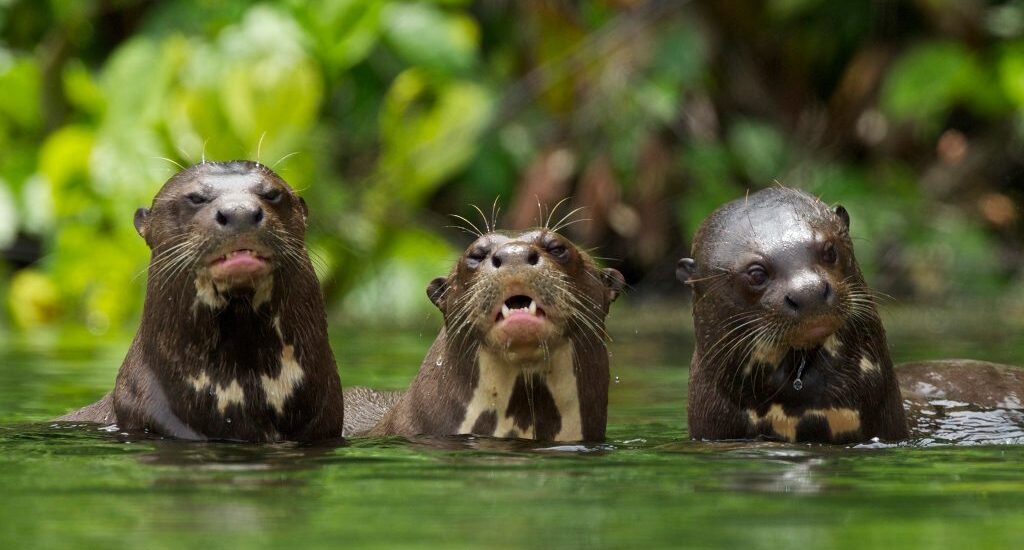If you’re craving an amazing journey in the Amazon, Manu National Park in Peru should be at the top of your list. This national park, one of the most biodiverse regions on the planet, is home to a diverse range of species and breathtaking scenery.
In this guide, we’ll go over everything you need to know, from the ideal time to visit and how to get there to the must-see sights and activities. Prepare to encounter nature in its finest form in this wildlife sanctuary!
Location
The Manu National Park extends into Cusco and Madre de Dios region, in an area that spans over 1,716,295 hectares. We can say that its location is unique, as it’s in the middle of the Amazon Peruvian jungle Forest and the Andes.
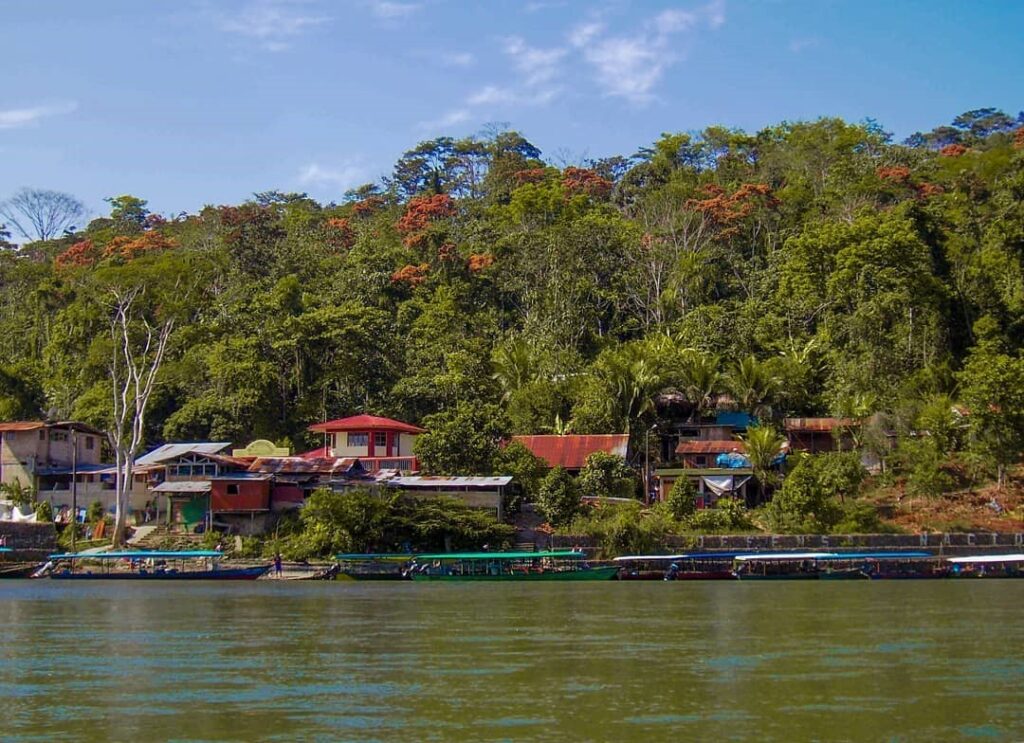
Since 1973, this area has been declared protected by the Peruvian Government, and it has become a natural sanctuary for animals and plants. Fourteen years later, in 1987 it was declared a natural world heritage by the Unesco.
Thanks to its wide variety, This National Park is perfect for the numerous living creatures inhabiting the Manu: From majestic jaguars and elusive tapirs to bright parrots and colorful plants, The Manu National Park’s biological diversity is really impressive.
The Paititi Legend
The Lost City of Paititi, also known as Paititi or Great Paititi, is a legendary tale that adds to Manu’s attraction. Although many believe it was during the Inca or pre-Incan empire that this city flourished, it continues to excite those who want to find buried treasures and learn about ancient cultures.
The Paititi story legend originated in the 16th century when writers such as Cristóbal Vaca de Castro, Pedro Sarmiento de Gamboa, and Juan Álvarez Maldonado mentioned a secret and prosperous kingdom in the Amazon rainforest.
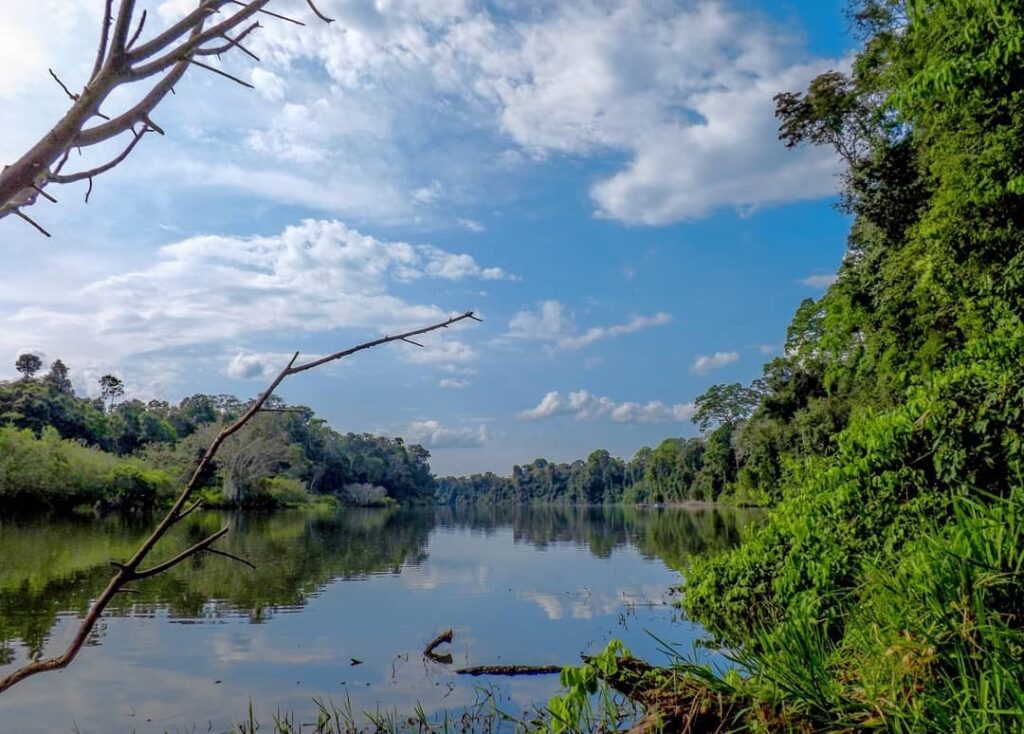
Its accounts have sparked a lot of interest among explorers over the years, encouraging many to set off on adventures in search of this lost city. Nowadays, people have different thoughts about where Paititi might be.
Some believe it could be in Manu National Park in southeastern Peru. Others think it may be in Madidi National Park in Bolivia. There are even ideas that it could be tucked away in the Brazilian jungle. Whatever the theories about the Paititi you may find, undoubtedly it adds more mystery and appeal to Manu.
Weather
Because of its varied terrain, Manu National Park generates a multitude of “microclimates.” Temperatures in lower altitude areas vary from 35 to 25 degrees Celsius during the day and night. However, high-elevation areas may expect colder conditions, with warm days and frigid nights.
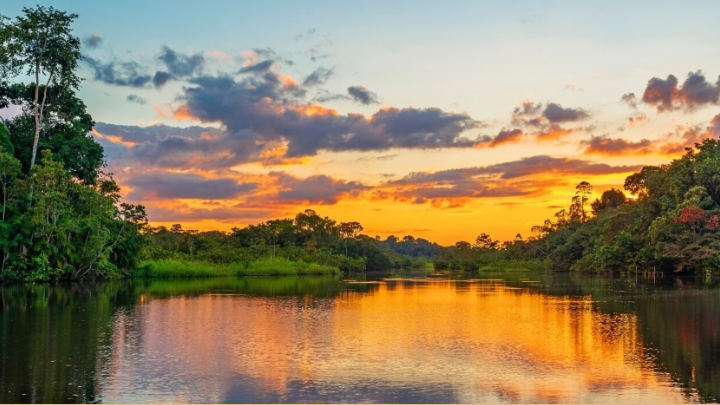
After the rainy season, the region known as “friaje” in Spanish is also likely to experience a chilly season with temperatures ranging from 10 to 8 C. The driest months are typically those that fall between April and October, with the remaining months having rainfall.
Cultural and Protected Areas
The Manu is divided into two different areas: the Manu Cultural Zone and the Manu Reserved Zone, each zone offers special experiences for visitors. Together, these two zones work closely to support conservation. The Cultural Zone shields the Reserved Zone from outside pressures and helps preserve local culture.
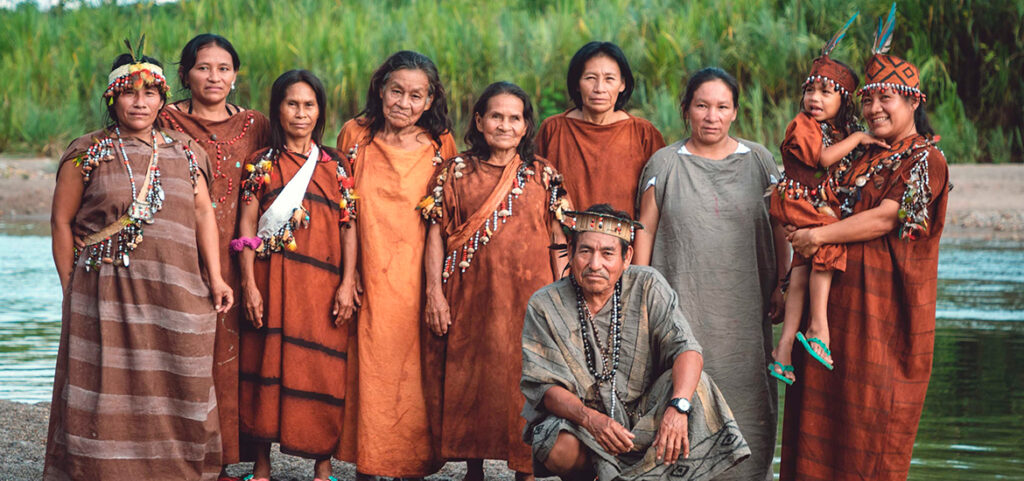
The tourism revenue from the Cultural Zone plays a vital role in funding conservation efforts in both areas. At the same time, research in the Reserved Zone is essential for maintaining the biodiversity on which local communities depend. In the Cultural Zone, you can meet indigenous communities who have deep connections to their land.
Here, you can learn about their traditions, like hunting, fishing, and farming. This area not only lets you see their way of life but also promotes sustainable tourism. You can engage with locals, discover their spiritual beliefs, and take part in cultural activities. Your visit helps support these communities through tourism revenue, making it a win-win for everyone!
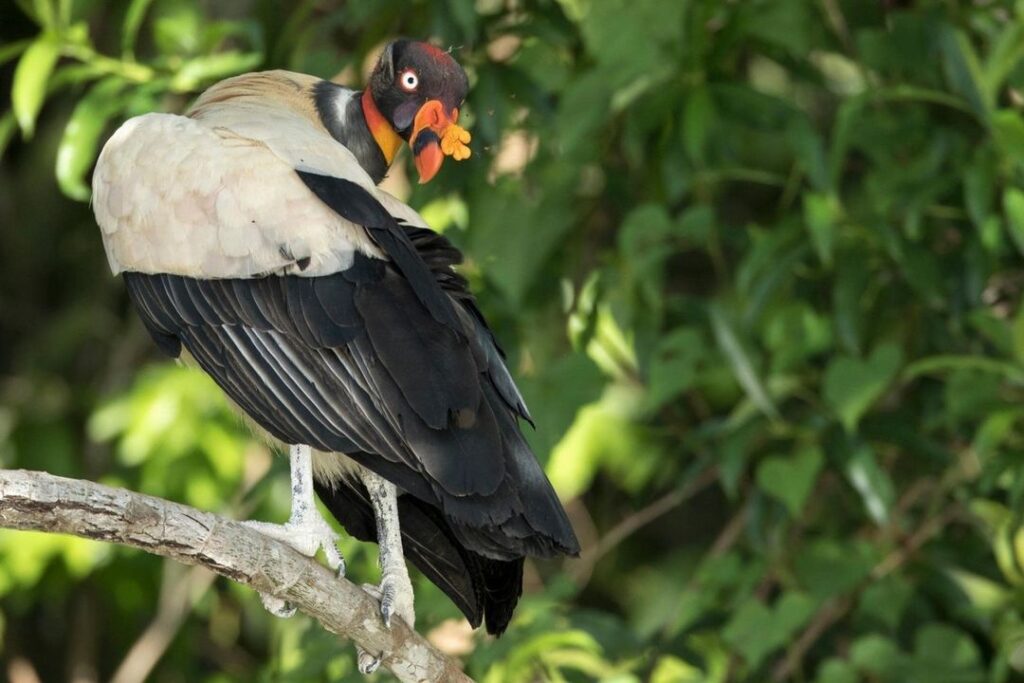
The Manu Reserved Zone is a special place that focuses on protecting our planet’s amazing biodiversity and promoting scientific research. By limiting human activities, they safeguard rare and endangered species like macaws and jaguars, along with many unique plants and animals.
Nature lovers will truly enjoy exploring this beautiful area, where they can peacefully witness the incredible diversity of life in the Amazon. There’s also a third zone in the Manu, the restricted zone. Several tribes haven’t ever had contact with civilization, and as its name implies the entrance is not allowed by any means.
When you visit Manu, you can enjoy the rich cultural heritage of the indigenous people and the incredible biodiversity of the Amazon. Most importantly, your visit fosters a sustainable balance between people and nature.
Activities to Do
Take a night walk: If you’re brave enough, dare to take a stroll in the jungle at night. You’ll see mammals, rodents, tarantulas, and other animals active only at night.
Enjoy the best sunrise ever: The Three Crosses viewpoint is a wonderful spot located just 41 km north of Paucartambo, at a breathtaking height of 4,000 meters above sea level. This lovely town in Cusco is a perfect starting point for exploring the beautiful Peruvian jungle.

From this vantage point, visitors can enjoy incredible views of the Ausangate snow peak and the vibrant treetops of Manu. This natural wonder happens when sunlight meets the morning humidity, creating the magical illusion of one sun rising into three. To make the most of this amazing sight, plan your visit between May and August, around 6 in the morning during the dry season.
Spot the Cock of the Rocks: Peru’s national bird is “El gallito de las rocas”, “the cock of the rocks.” Its red color and unusual appearance make it the favorite for photographers. This bird receives its name as they build its nest in the cliffs, far away from potential predators.
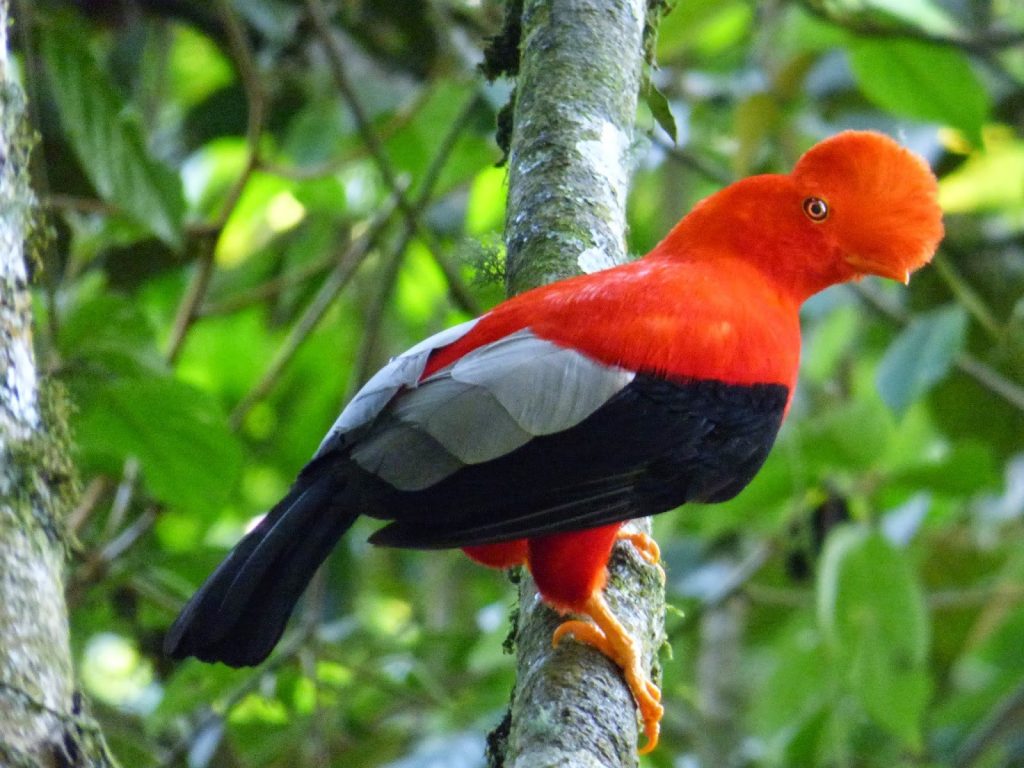
Navigate the Salvador Lake: The Salvador Lake is beautiful in Manu National Park, stretching about 3.5 km, it houses a lovely family of giant otters! As we circle the lake on a catamaran, we will enjoy unique views of the lake and its connection to the jungle.
The trees along the shore are filled with life. Monkeys play in the branches. Red and Green Macaws, Chestnut-fronted Macaws, Scarlet Macaws, and Blue and Yellow Macaws fly high above. You might also spot herons at the edges. If you’re lucky, you could see caimans, perfectly still like logs, beneath the branches.
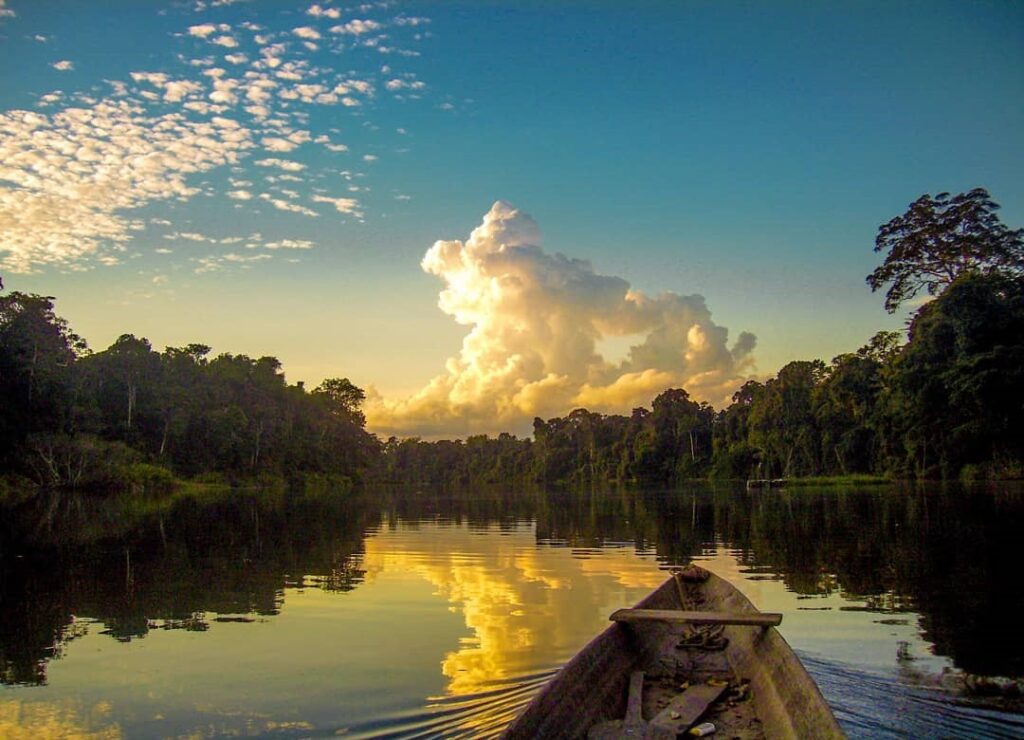
As we glide across the water or look among the fallen trees, we may catch a glimpse of the shy giant otters. These friendly animals love to socialize, often playing and fishing together. You might see them lounging on a fallen tree trunk, enjoying a nap, or nibbling on a tasty fish. It’s sure to be a memorable experience!
FAQs
What Can I Pack?
Starting from insect repellent to zip lock bags, you may need breathable long pants and t-shirts, cash. Flashlight, etc.
How Can I Get There?
You can take a car heading to Paucartambo, and once there you go to the Kosñipata district capital called Pilcopata, which will be your gateway entry to Manu.
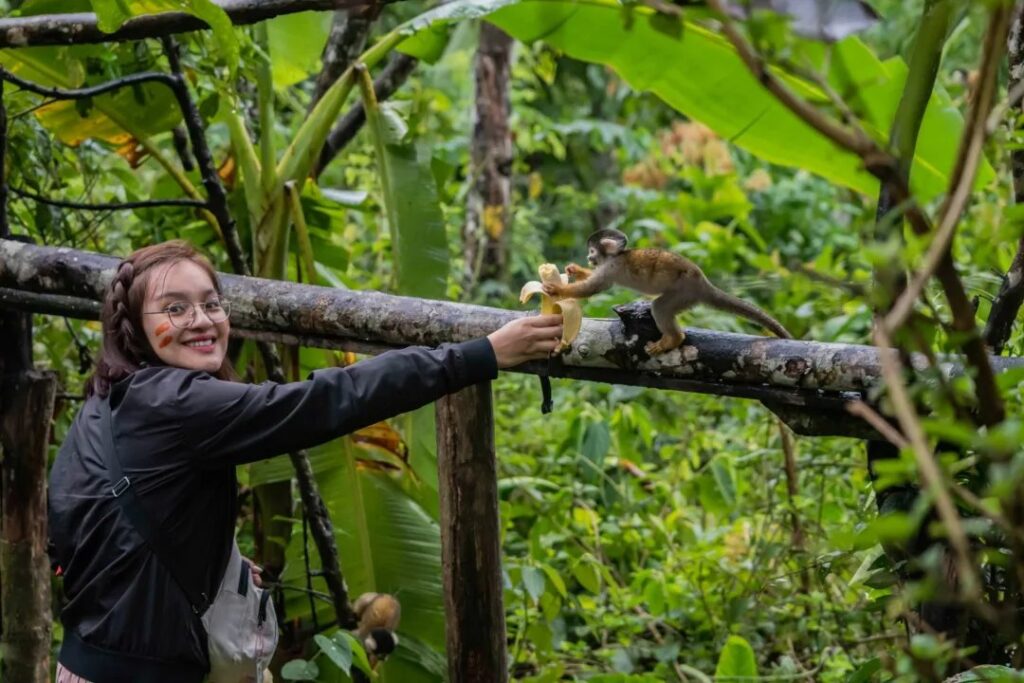
Where can I Stay
In Pilcopata, the closest area to Manu, you can find several eco-lodges where you can have a pleasant stay.
Do I Have to hire a guide?
You can go on your own in the cultural zone however if you want to explore the protected area, a guide is mandatory
How Many flora and fauna Species are there?
There are more than 1000 bird species, over 2000 animal species, and around 5000 plant species, which makes the Manu National Park a Peruvian biodiverse kingdom.
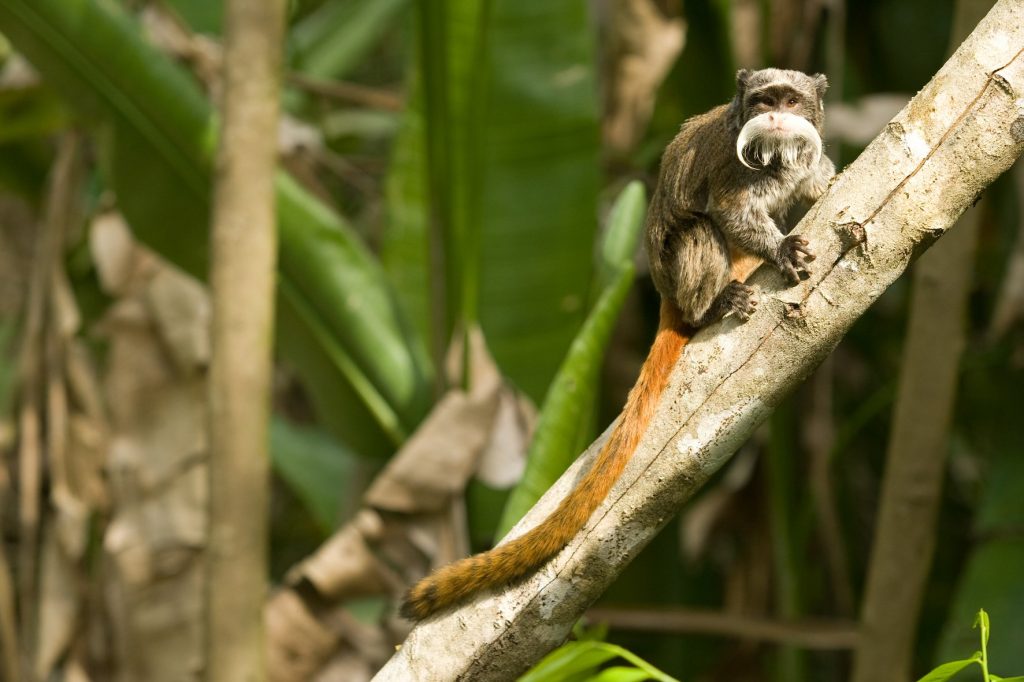
The Manu’s flora and fauna diversity are waiting for you! Live the adventure in the Peruvian Amazon with Viagens Machu Picchu. We are a reputable travel agency that operates tours all around Peru, we’ll be more than glad if you entrust us with your dreams to know more about our country! Contact us to start planning your visit to the Amazon and Peruvian Lands!
Viagens Machu Picchu, journeys that inspire, moments that last.
| Spanish > Viagens Machu Picchu |
| English >Viagens Machu Picchu |
| Portuguese > Viagens Machu Picchu |

